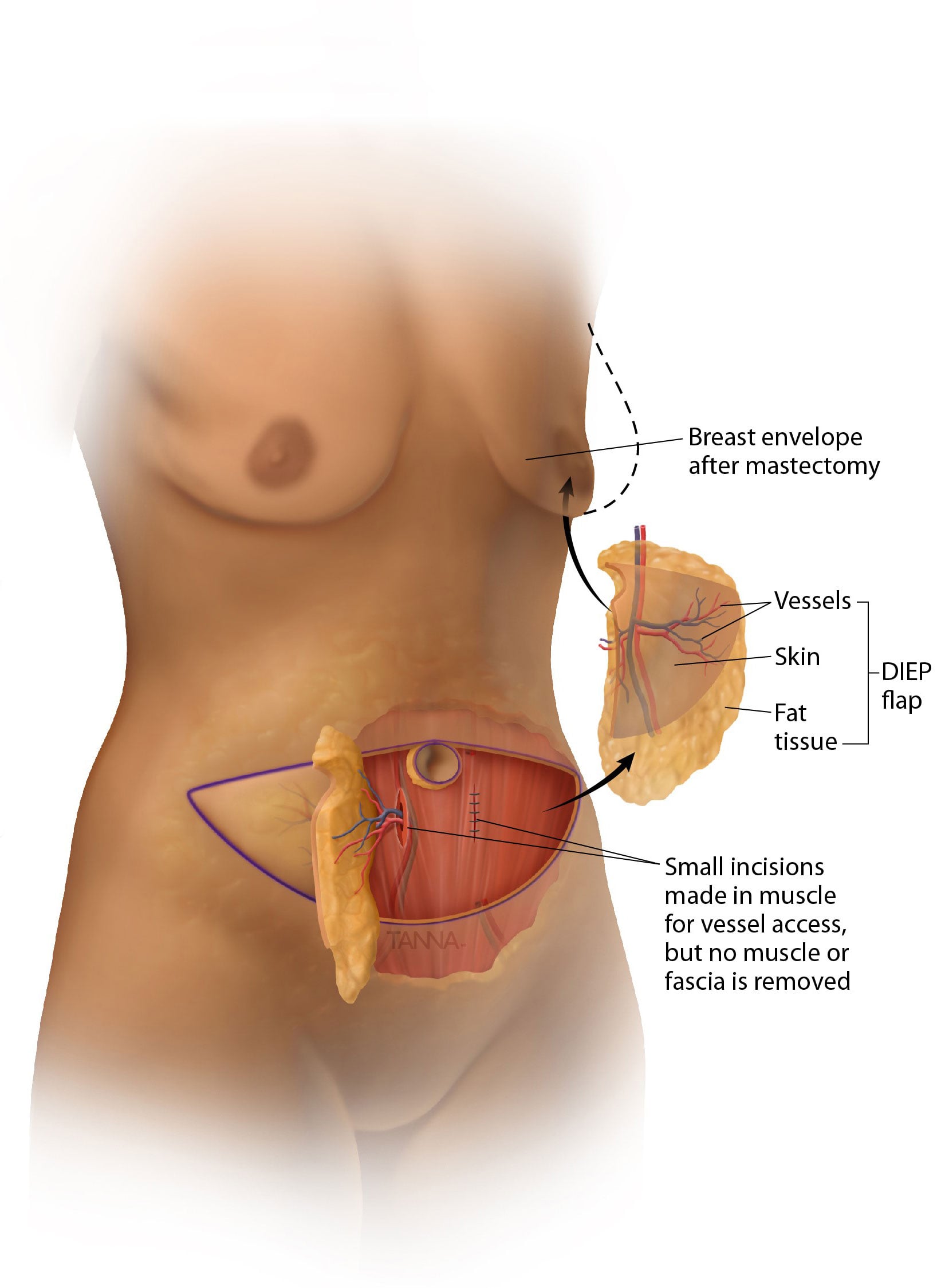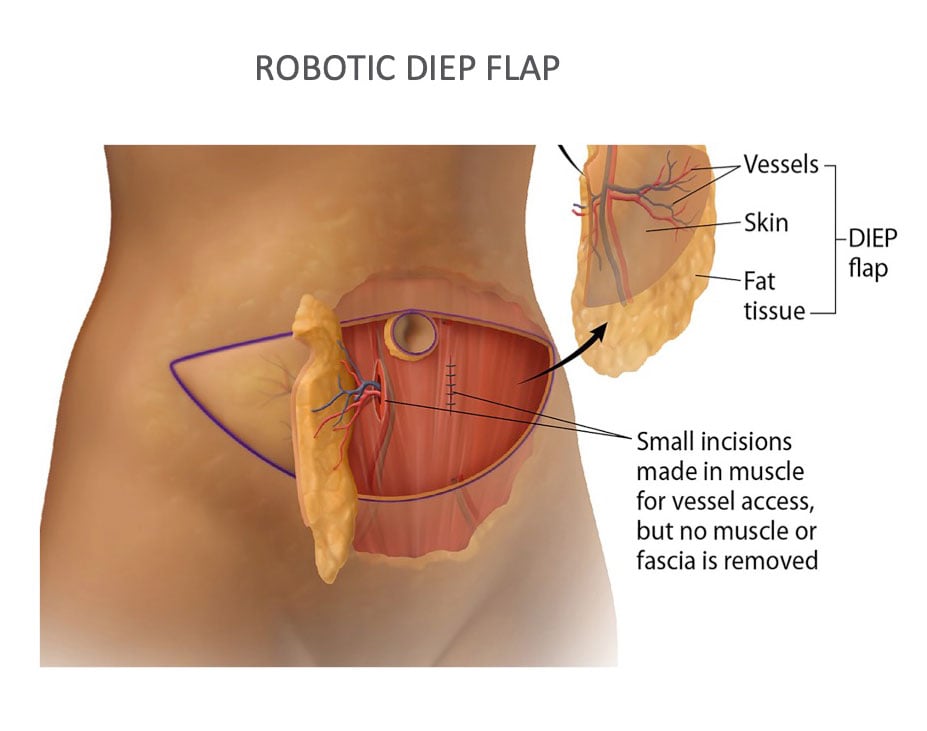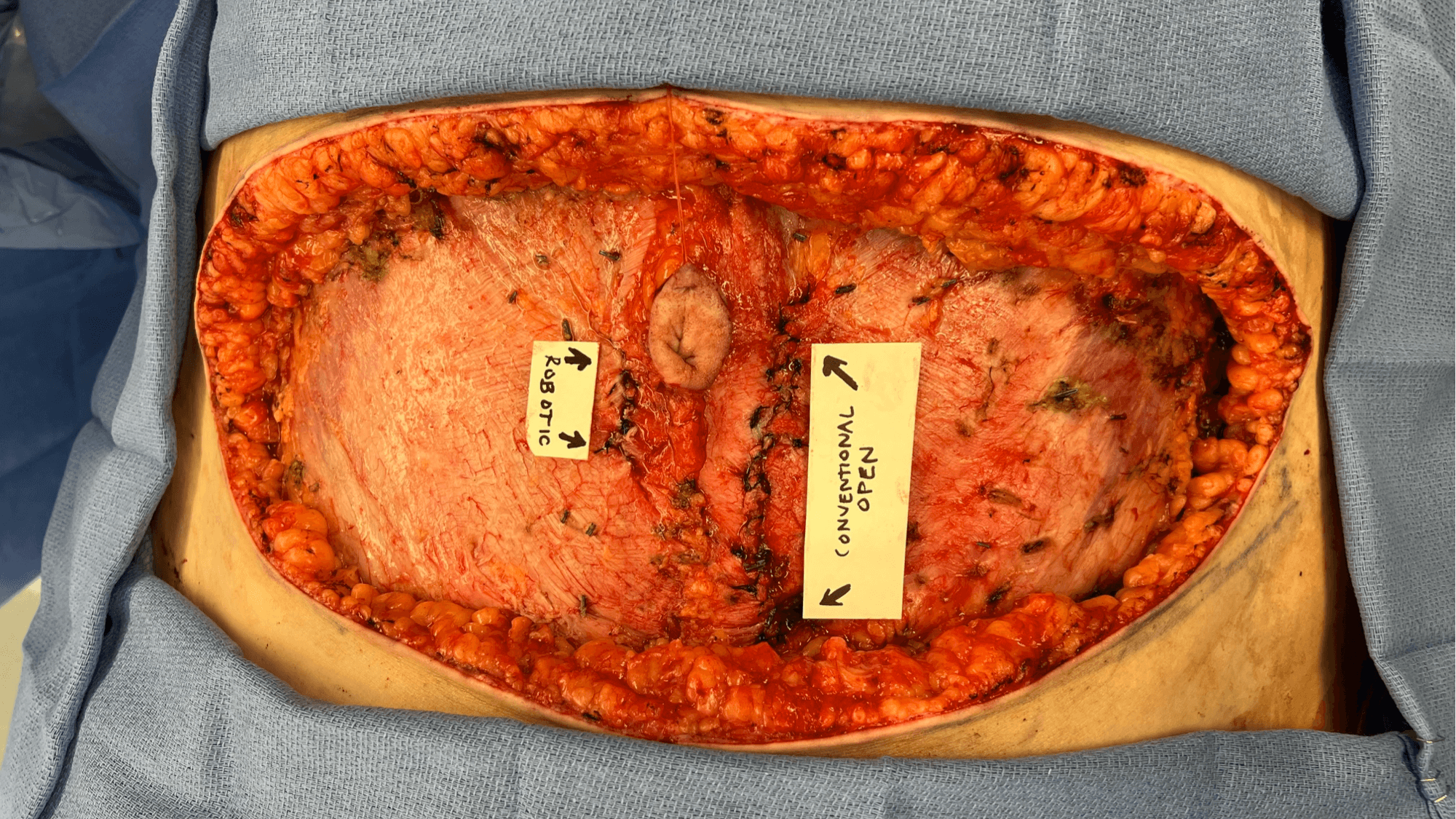The DIEP (deep inferior epigastric perforator) flap uses a woman’s lower abdominal fat to reconstruct the breast.
Who Is A Good Candidate
Not all women are candidates for robotic DIEP flap breast reconstruction. Women who have not received previous abdominal surgeries are likely better candidates to receive this type of breast reconstruction. Additionally, prior to surgery, patients will receive preoperative imaging (a MRI scan) to assess their vascular anatomy and confirm that they are candidates for robotic DIEP flap breast reconstruction.







